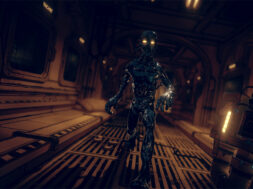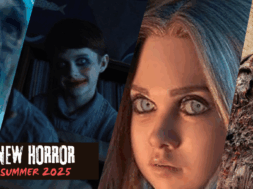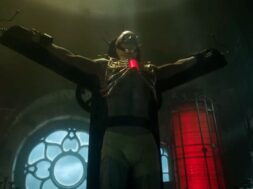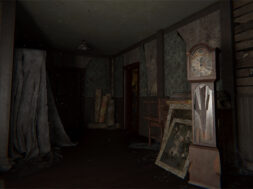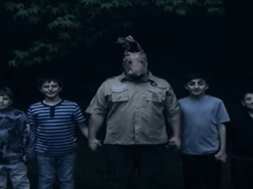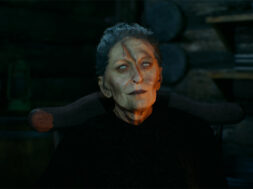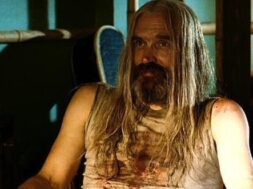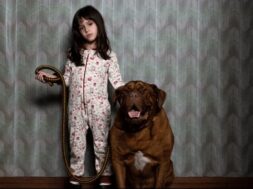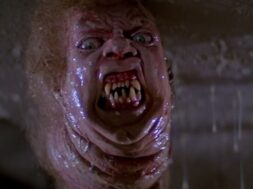Of all the horror icons born of the ‘80s, it’s pint-sized killer doll Chucky that’s still thriving. Between a new TV series in the works by the original creators and an unaffiliated reboot looming, Chucky’s lust for blood remains as strong as it was 30 years ago, when Child’s Play stabbed its way into theaters on November 9, 1988. The low budget horror feature not only won the box office upon release, but launched an enduring franchise with an impressive talent for maintaining continuity, a rarity among horror franchises. It wasn’t just the iconic Chucky that made Child’s Play such a long-lasting hit, though, but the cast of talented actors, an innovative special effects and makeup team, and an incredible roster of creative talent.
Inspired by his father’s work in advertising during the Cabbage Patch Dolls craze, Don Mancini wrote the script for Child’s Play while in college at UCLA. Only it was titled Batteries Not Included and was much more psychological in its horror as it satirized how marketing affecting children. Enter executive producer David Kirschner, who had just completed work on An American Tail for Steven Spielberg and was looking to break free from animation. After reading the book The Dollhouse Murders, he was seeking something with dolls specifically. Eventually, once Mancini’s script started to get passed around, word got out that Spielberg was already working on a film with that very title, so it was changed to Blood Buddy, and it finally found its way into Kirschner’s hands.

Blood Buddy drew a lot of inspiration from Magic, in which the doll wasn’t the actual killer but more representative of the twisted psychology of its owner. Even the large head of the doll was a nod to Fats. But there needed to be a way to become more emotionally invested in Karen and Andy Barclay’s story. This is where director Tom Holland (Fright Night) came in, making key changes that would alter the trajectory of Chucky’s story for the better. Between new screenwriter John Lafia and Holland, the killer doll transitioned from Buddy to Chucky, and became a literal killer doll thanks to voodoo. Holland also pushed up the reveal of Chucky, not keeping the action relegated to the third act.
Between the story changes and Kirschner’s drawing of the doll, based on Mancini’s detailed description in his original screenplay, the next step was to bring this doll to life. Kirschner enlisted special makeup effects artist Kevin Yagher (A Nightmare on Elm Street 2: Freddy’s Revenge, A Nightmare on Elm Street 3: Dream Warriors) to create Chucky. Though the movie’s monster is only 2-feet tall, the creation of Chucky was an arduous task for the team. This was low budget, practical effect driven feature when animatronics was still at its infancy, causing Yagher and his team to really invent a lot of the effects as they went. If the complexities of the mechanisms involved wasn’t enough, Chucky’s appearance began to morph as the narrative progressed; he became more humanlike the longer he remained in the doll’s body.
Chucky wasn’t all animatronics and puppeteering, though the brilliant work from the makeup and effects team can’t be applauded enough, he was also brought to life by actors. Actor Ed Gale, who made his debut as Howard in Howard the Duck, delivered amazing work as Chucky’s stunt double that hasn’t gotten enough credit in the decades since the film’s release. Gale actually studied the movements of the animatronic and puppet iterations of Chucky, and emulated that in his performance for consistency. It also meant that an identical set scaled 30% larger had to be constructed to keep it proportionate.
Of course, the final component to Chucky is that of actor Brad Dourif. Holland pulled Dourif in after having worked with him on Fatal Beauty. Well, at least the opening scene that featured Chucky in his human form. After that, the doll was voiced by a female. But an abysmal test screening made clear that changes had to be made prior to release. Kirschner brought Mancini back into the fold for the editing process. 30 minutes of footage was cut to make for a much more streamlined story, but more importantly, Dourif was brought back to voice Chucky the entire way through. His voice makes Chucky.
Playing against the intense mania of Dourif’s performance was a fantastic, small cast of Alex Vincent, Catherine Hicks, and Chris Sarandon, who all contributed to making Chucky believable while bringing the heart to the story. Chucky may have captured the fandom, but the pure innocence of young Andy Barclay makes for a perfect counterbalance.
Child’s Play wasn’t an easy film to make, but it was one where every facet of the filmmaking process was at their best. It’s difficult to make an inanimate object like a doll scary, but Child’s Play succeeded. Very few moments are as unnerving as the one in which Karen Barclay discovers Chucky’s batteries never left the packaging, therefore her son’s toy has been operating on its own. The strength of Chucky’s origin meant that the killer doll returned for 6 sequels, plus more on the way. It doesn’t even begin to cover what a pop culture phenomenon the horror icon has become in the decades since release. Here’s to 30 more years and new adventures with Chucky. We’re friends ‘til the end, remember?
